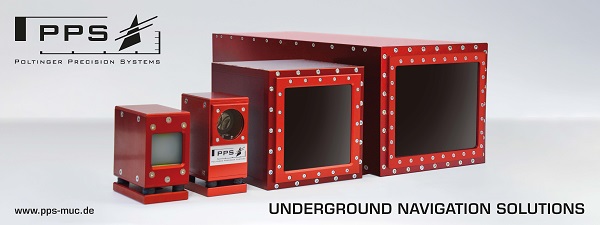UK-first technique in full swing on HS2’s River Tame West Viaducts
- A giant cantilever structure, used in the UK for the first time, has built the first section of HS2’s 472 metre River Tame West Viaducts.
- The specialist method will be used to build nine viaducts in HS2’s Delta Junction, totalling 6,500 metres in length.
- The process installs pre-cast concrete segments produced at HS2’s nearby factory, where a 200-strong team have celebrated making the first 1,000 segments.
A specialist cantilever process has been used for the first time in the UK by HS2 to build the first span of a 472-metre-long single track viaduct in the West Midlands.
The River Tame West Viaducts carry three rail tracks in total, made up of one single track viaduct and one double-track viaduct. These precast segmental viaducts are located at the northern tip of the Delta Junction – the triangular section of the railway that enables trains to run between London, Birmingham and the north.
The two River Tame West Viaducts cross the River Tame near Water Orton and join the Curdworth Box, which will take high speed trains over the existing Birmingham to Derby railway.
Construction of the 20 piers to support the viaducts started in 2023, with the first spans of the three track section completed in Spring 2024. This initial phase involved placing the segments onto two 42 metre truss beams, moving them into place with a skidding trolley, and securing them by post-tensioning techniques.
Since then, the giant cantilever structure has been built, using a 22-metre-high mast, including temporary post-tensioning cable stays and a 14-metre-high swivel crane.
The crane lifts and installs one concrete segment into place at a time, eventually completing each 45-metre span length. The permanent post-tensioning tendons are then stressed to allow the removal of the temporary cable stays, leaving the permanent structure securely in place. The same process is repeated between each pier until all of the spans are complete.
The process was initially developed by Campenon Bernard, later becoming part of VINCI Construction. The mast and the swivel crane deployed on the River Tame West Viaducts are designed and manufactured by the company BERD.
A team of 40 people are currently involved in the operation, and a total of 2,500 concrete segments will be moved into place using this specialist technique. All the deck segments are due to be in place by August 2026. The same process will be used to build a total of nine viaducts in the Delta Junction.
The concrete segments are being manufactured at HS2’s bespoke outdoor factory near Lea Marston. The 200-strong team on this site has just celebrated producing the 1,000th segment out of a total 2,742 segments which are being made for the six segmental viaducts of the Delta Junction.
Sam Hinkley, HS2’s Lead Senior Project Manager for Delta Junction said:
“This is a fantastic UK-first for HS2, signifying another proud moment for everyone working on the project. It has only been possible through the collaborative and innovative approach with our designers, civils contractor and wider supply chain, who are delivering this huge feat of engineering.”
The project is being delivered by HS2’s main works contractor for the West Midlands, Balfour Beatty VINCI (BBV) who are constructing 90km of HS2 between Long Itchington in Warwickshire to the centre of Birmingham and on to Staffordshire.
Nicolas Gallone from Balfour Beatty VINCI added:
“We’re using a specialist construction method to build the River Tame West Viaducts – a technique which has never been used in the UK before. It’s a significant moment for Balfour Beatty VINCI, the HS2 project and the construction industry in this country.
“This post-tensioning technology, pioneered by VINCI, is used on other major construction projects around the world. Now, it’s helping us to deliver these complex viaducts and overcome engineering challenges along the way, including existing waterways and utilities.”
The viaduct design requirements are being delivered through a Mott MacDonald and SYSTRA Design Joint Venture (MMSDJV).
Ian Johnson, Project Director at MMSDJV, said:
“Reaching this incredible milestone is a wonderful moment for the Mott MacDonald SYSTRA Design Joint Venture team. It brings to life the innovation, collaboration and commitment of everyone involved on the project and marks a significant part of the journey to bring high speed trains between Birmingham and London.”
In this complicated section of the Delta Junction, there are six tracks of the railway running alongside each other as they join the southern end of the Curdworth Box. The River Tame West Viaducts carry three tracks, the River Tame East Viaduct carries one track and the Water Orton Viaducts carry two tracks.
HS2’s Delta Junction is a triangular section of line, enabling trains to travel between London and Birmingham, Birmingham and Manchester, and direct between London and Manchester without stopping at Birmingham. It is made up of embankments, cuttings and a total of 13 viaducts taking high speed tracks over motorways, local roads, existing rail lines, rivers and floodplains. The viaducts include 6 precast segmental viaducts, 4 composite viaducts and 3 low viaducts.
Once complete, HS2 services will run between London and the West Midlands on a dedicated high-speed line before linking reaching destinations further north via the existing West Coast Main Line. It will provide significantly more efficient and faster journeys, while relieving pressure on the most congested southern end of the West Coast Main Line, allowing more local and freight trains to operate.
source HS2.
cover tunnel photo by: Matt Brown from London, England / CC BY
Copyright 2019-2024 TunnelContact.com








www.youtube.com